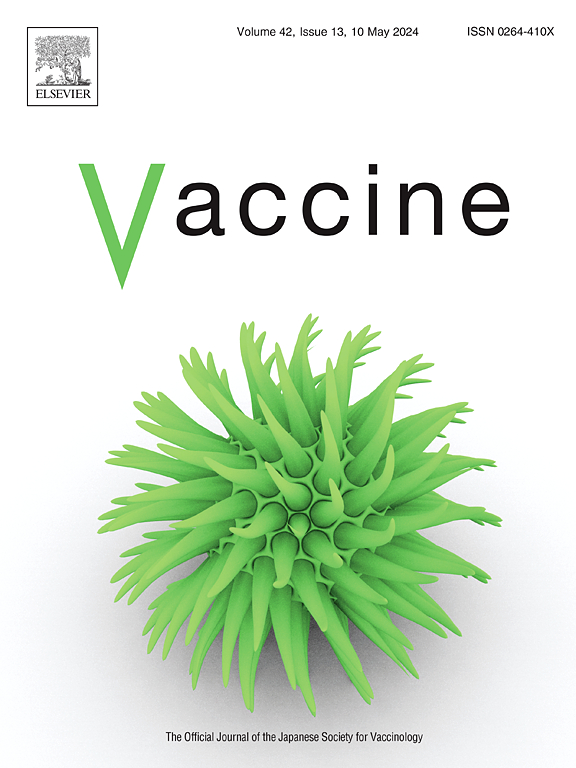50岁及以上成人带状疱疹疫苗犹豫的驱动因素:一种机器学习方法
IF 4.5
3区 医学
Q2 IMMUNOLOGY
引用次数: 0
摘要
背景:带状疱疹(HZ)在50岁及以上的成年人中构成了越来越大的公共卫生挑战,疫苗犹豫是提高免疫接种率的主要障碍。了解导致HZ疫苗犹豫的因素对于制定策略以提高这一人群的疫苗接种率至关重要。本研究旨在利用机器学习模型识别和分析HZ疫苗犹豫的关键决定因素,为指导有针对性的教育策略和干预措施提供见解。方法:采用横断面研究方法,于2024年4 - 8月在上海市4个社区卫生服务中心收集50岁及以上人群的数据。数据收集包括人口统计信息、HZ疾病和疫苗知识、5C量表和疫苗健康素养。我们采用LASSO回归进行变量选择,然后使用四种机器学习算法进行关键变量分析:逻辑回归、随机森林、支持向量机和极限梯度提升(XGBoost)。使用AUC和校准图评估模型性能。Shapley加性解释(SHAP)用于解释和识别关键预测因子。结果:共纳入1152名参与者(平均年龄66.1±8.8岁;49.7%为男性),其中73.95%的人报告对HZ疫苗犹豫不决。从21个特征中选择10个特征进行建模。XGBoost模型表现最佳,AUC为0.960 (95% CI: 0.937 ~ 0.983)。SHAP分析确定信心、疫苗素养、自满、疾病知识和计算是主要预测因素。结论:SHAP-XGBoost模型对带状疱疹疫苗犹豫具有较强的预测性能,疫苗素养和5C心理前因被确定为关键预测因子。这一工具可以为有针对性的卫生干预提供信息,未来的工作可能会整合社区数据库,以进行大规模识别和量身定制的群体战略。本文章由计算机程序翻译,如有差异,请以英文原文为准。
Drivers of herpes zoster vaccine hesitancy in adults aged 50 and above: A machine learning approach
Background
Herpes zoster (HZ) poses a growing public health challenge among adults aged 50 and above, with vaccine hesitancy being a major barrier to improving immunization rates. Understanding the factors driving HZ vaccine hesitancy is essential for developing strategies to enhance vaccination uptake in this population. This study aims to identify and analyze the key determinants of HZ vaccine hesitancy using machine learning models, providing insights to guide targeted educational strategies and interventions.
Methods
A cross-sectional study was conducted from April to August 2024, collecting data from individuals aged 50 and older at four community health service centers in Shanghai. Data collection included demographic information, HZ disease and vaccine knowledge, the 5C scale, and the vaccine health literacy. We employed LASSO regression for variable selection, followed by analysis of key variables using four machine learning algorithms: logistic regression, random forest, support vector machine, and eXtreme Gradient Boosting (XGBoost). Model performance was evaluated using AUC and calibration plots. Shapley Additive Explanations (SHAP) were used to interpret and identify key predictors.
Results
A total of 1152 participants (mean age 66.1 ± 8.8 years; 49.7 % male) were included, with 73.95 % reporting hesitancy toward the HZ vaccine. Ten out of 21 features were selected for modeling. XGBoost model showed the best performance with an AUC of 0.960 (95 % CI: 0.937–0.983). SHAP analysis identified confidence, vaccine literacy, complacency, disease knowledge, and calculation as the primary predictors.
Conclusions
The SHAP-XGBoost model showed strong predictive performance for herpes zoster vaccine hesitancy, with vaccine literacy and the 5C psychological antecedents identified as key predictors. This tool can inform targeted health interventions, and future work may integrate community databases for large-scale identification and tailored group strategies.
求助全文
通过发布文献求助,成功后即可免费获取论文全文。
去求助
来源期刊

Vaccine
医学-免疫学
CiteScore
8.70
自引率
5.50%
发文量
992
审稿时长
131 days
期刊介绍:
Vaccine is unique in publishing the highest quality science across all disciplines relevant to the field of vaccinology - all original article submissions across basic and clinical research, vaccine manufacturing, history, public policy, behavioral science and ethics, social sciences, safety, and many other related areas are welcomed. The submission categories as given in the Guide for Authors indicate where we receive the most papers. Papers outside these major areas are also welcome and authors are encouraged to contact us with specific questions.
 求助内容:
求助内容: 应助结果提醒方式:
应助结果提醒方式:


